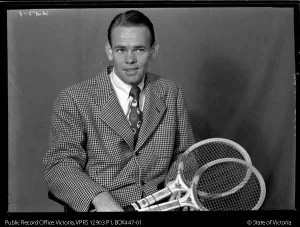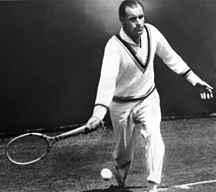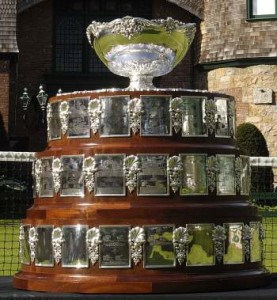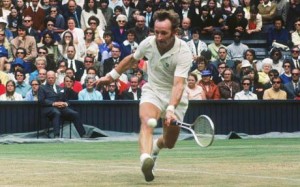Posted on
February 26, 2010 by
Marianne Bevis
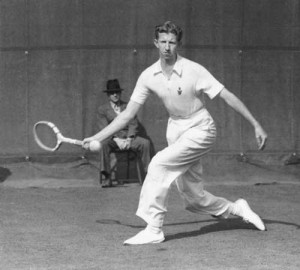
There are names so ingrained into the tennis consciousness that one feels they’re still to be found gracing the Royal Box on Wimbledon’s Centre Court. The commentary team helpfully points out the faces to match the names. Rod Laver, Margaret Court, Ilie Nastase, Billie Jean King: They have become like family, like old friends.
Such is the case with Don Budge. A Grand Slam will not pass, nor a reference to “the greats of tennis” be made without his name being mentioned. And just lately, promoted by Roger Federer’s record-breaking feats, his name has appeared with ever greater frequency, bracketed alongside potential contenders for the “greatest ever” crown.
There is good reason for Budge to be one of those constants in the game. He was born way back in the Great War, achieved the first ever Grand Slam just as World War 2 was fermenting (and Rod Laver just a month old), and spanned the amateur and the professional age.
He played against the icons of tennis—Fred Perry, Bill Tilden, Frank Sedgman—and against modern greats such as Pancho Gonzalez.
As recently as 1973, aged 58, he teamed up with Sedgman to win the Veteran’s Doubles title at Wimbledon, so would have shared the locker room with men’s seeds such as Jimmy Connors and Bjorn Borg.
He lived—just—into the 21st century. Yet to modern fans, he is little more than a name. It’s time to put that right.
Budge came from good stock, from a bold father who upped sticks from Scotland at the turn of the 20th century for a healthier life in the warm climate of California.
Donald was born in 1915 and inherited his father’s sporty genes. Budge senior had played reserve for Rangers football team before he left for the New World.
Don was also bright—he went to the University of California at 18—and he was over 6’1” tall. He was, in fact, the perfect package for tennis.
As for his character, well Time magazine, which first featured Budge on its cover in September 1935, summed him up as:
“A phlegmatic, gentle youth, so homely that even his mother smiled when a friend said that, if not the best tennis player in the world, her son was certainly the ugliest, young Budge is likeable but undistinguished off a tennis court.”
His road to tennis was a familiar one. Budge tried, and was good at, many other sports, and excelled at baseball. It was his elder brother, Lloyd, who was the tennis player, and who persuaded Don to apply his fearsome bat-swinging prowess to a tennis racket.
He learned his trade quickly on the public hard courts of the West Coast and at just under 15, he won the California U15s Championships. That was his incentive to give up baseball.
By 18, he had won the National Junior Championships by beating the top contender Gene Mako, from a two set deficit.
At 19, he was picked for the Davis Cup auxiliary team and with that beckoning success, walked away from university to devote himself to tennis. Read the rest of this entry →
![]()
